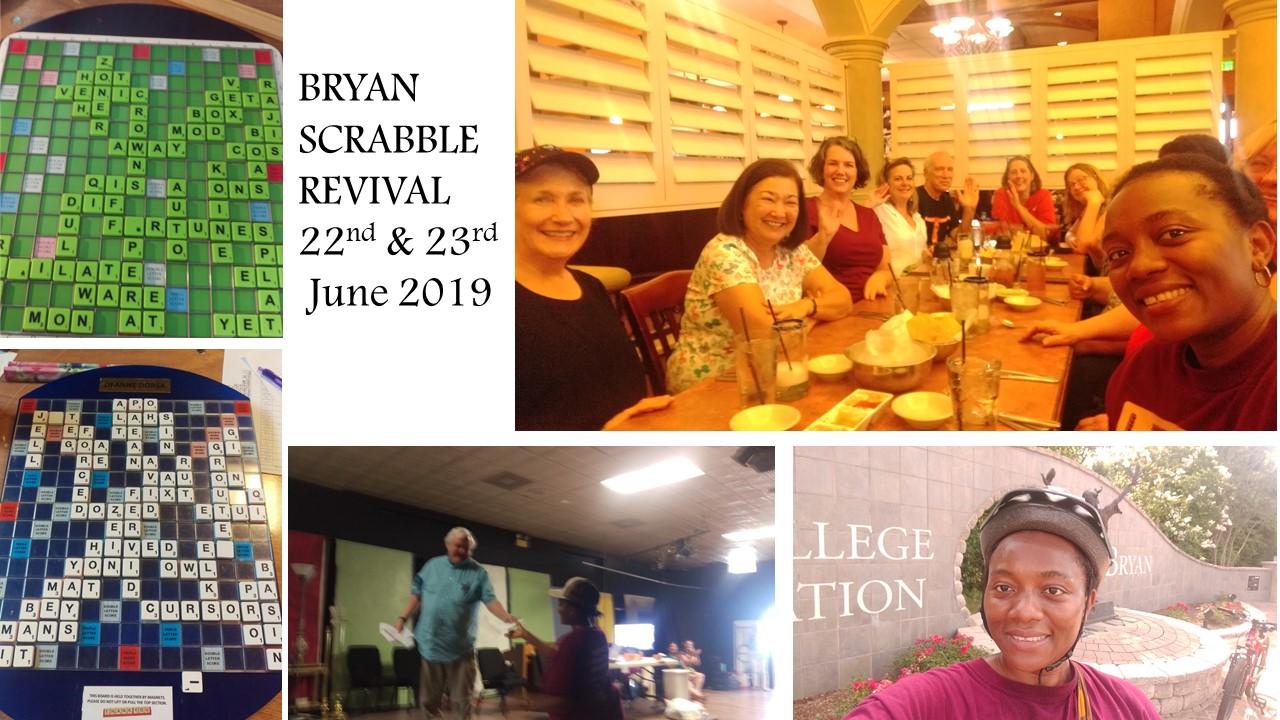June 2019

When I arrived at Texas A&M University I was surprised to find out that there was no scrabble group. After almost two years, I l got news of a scrabble tournament in Bryan from Judy who is a member of a scrabble club in Houston. I had no car during that period and I was learning how to ride a bicycle. I rode 5 miles to and from the tournament venue for two days. I could not have done it if I did not have the longing to play scrabble once more. My bicycling skills are better now.
People came from Austin, Dallas and San Antonio for the tournament. Evelyn Callaway hosted us at the Stage Center in Downtown, Bryan. It was a memorable experience for me. I had a chance to win the division 3 but the American dictionary was my undoing. Words like nef, wex, oo, ee and others were challenged off the boards. These words are playable in the Collins dictionary used in England and Nigeria. The tournament director, Michael gave advice that I needed to unlearn some words.
Scrabble is played on a 15 x 15 letter board. There are 100 tiles with alphabets written on them. The alphabets are not evenly distributed. The alphabets were chosen based on a research on the occurrence of letters in the newspapers. The highest occurring alphabets are the vowels. The consonants have higher scores than the vowels in the order of their ease of play. There are two blank tiles which can be used for any letter to complete a word.
---Patricia Kio
Patricia Kio is a PhD student in the College of Architecture